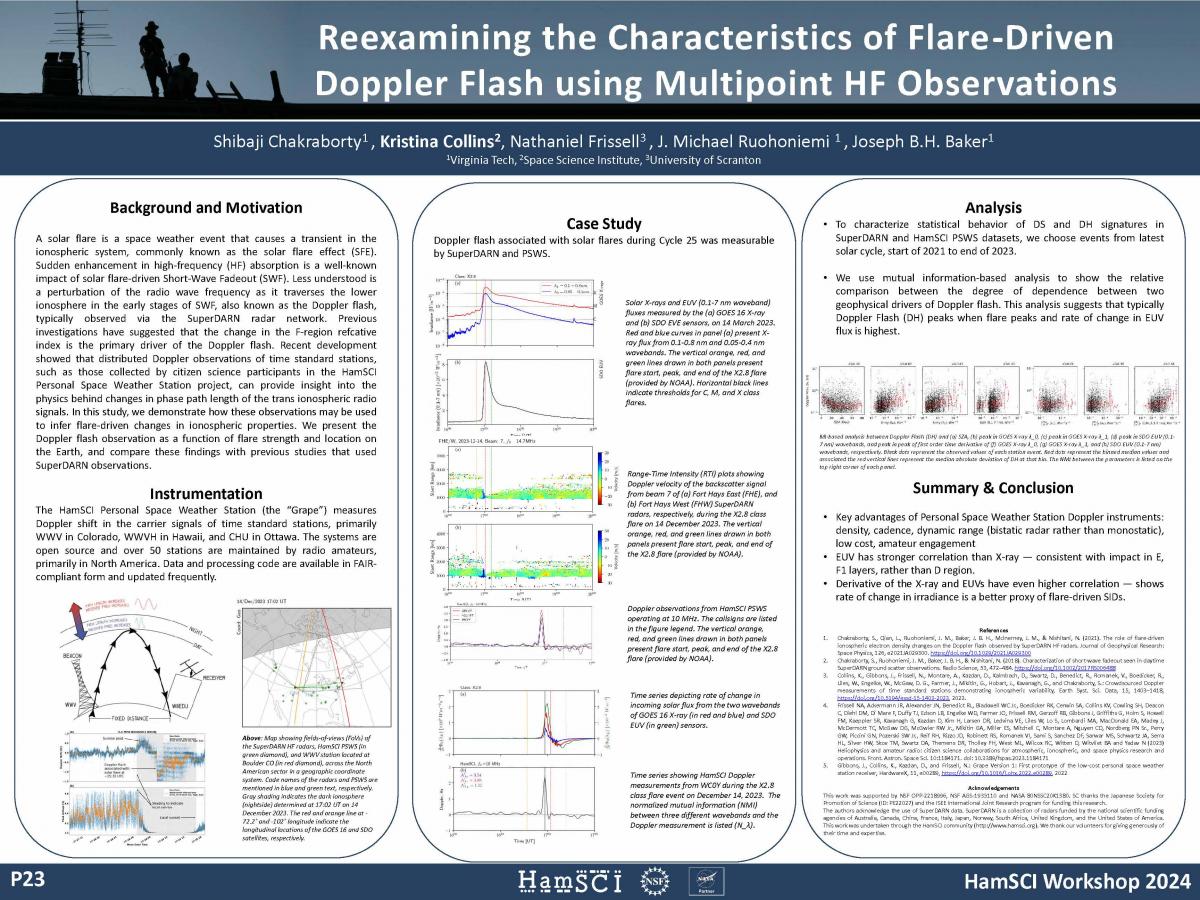| Title | Reexamining the Characteristics of Flare-Driven Doppler Flash using multipoint HF Observations |
| Publication Type | Conference Proceedings |
| Year of Conference | 2024 |
| Authors | Chakraborty, S, Collins, KV, Frissell, NA, J. Ruohoniemi, M, Baker, JBH |
| Conference Name | HamSCI Workshop 2024 |
| Date Published | 03/2024 |
| Publisher | HamSCI |
| Conference Location | Cleveland, OH |
| Abstract | Sudden enhancement in the ionospheric electron density following a solar flare causes disruption in the transionospheric high frequency (HF: 3-30 MHz) communications, commonly referred to as Shortwave Fadeout (SWF). This disruption is also recorded as a sudden enhancement in Doppler frequency in the received HF signal, referred to as Doppler Flash. This phenomenon was recorded and reported by the SuperDARN HF radar network. Previous investigations have suggested that among various phases of flare-driven SWFs observed by HF radars Doppler Flash is the first to observe, and there are no significant trends in Doppler Flash with location, operating frequency, or flare intensity. Recent development showed that Doppler observations from the distributed HamSCI Personal Space Weather Station (PSWS) can provide insight into the physics behind changes in phase path length of the trans ionospheric radio signals. Unlike SuperDARN, HamSCI PSWS can record the full phase of the Doppler Flash, provide an edge to revisit the characterization study and compare with existing dataset. In this study, we demonstrate how HamSCI observations can be used to infer flare-driven changes in ionospheric properties. We found: (1) HamSCI PSWS has higher dynamic range than SuperDARN during flare making it less susceptible to SWF, thus it can record the full Doppler Flash; (2) data from HamSCI PSWS shows a strong function trend with flare strength, operating frequency, and location on the Earth; and (3) HF rays traveling longer distances experienced statistically higher Doppler. We understand that, while instantaneous Doppler realized by the HF signal is proportional to the rate of change in solar irradiance, the total Doppler realized is proportional to the total flare-deposited energy in the ionosphere. |
| Refereed Designation | Non-Refereed |
| Full Text |

